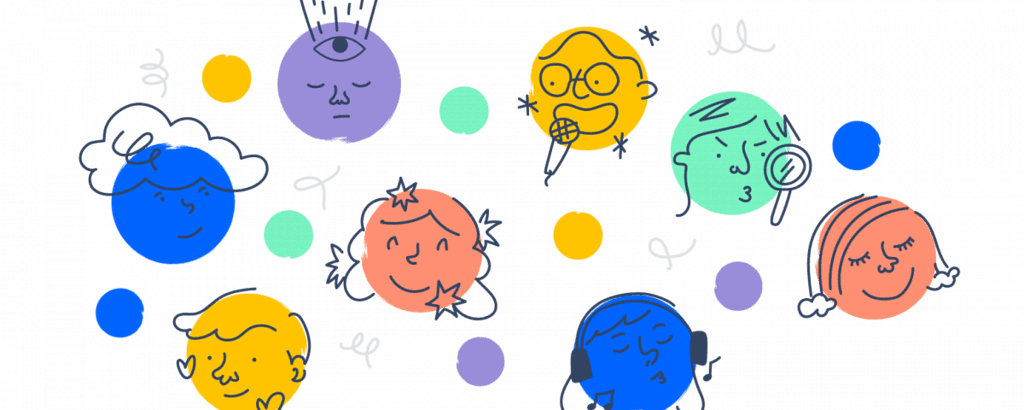Notes: Individual Differences | Teaching Aptitude for Teaching Exam - B.Ed Entrance PDF Download
| Table of contents |

|
| Introduction |

|
| Types of Individual Differences |

|
| Reasons for Individual Differences |

|
| Educational Implications of Individual Differences |

|
| Syllabus and Curriculum |

|
Introduction
Individual difference is a universal phenomenon. It is said that no two individuals are exactly alike. They differ from each other in some way or the other. Such a similarity or difference between persons reveals individual differences.
- According to Drever James: Individual Differences are variations or deviations from the average of the group, with respect to the mental or physical characters, occurring in the individual member of the group.
- According to Carter B. Good: Individual Difference is the the variation or deviations among individual in regard to a single characteristics or a number of characteristics, those differences which in their totality distinguish one individual from another.
- According to Skinner, C.E.: Today we think of individual differences as including any measurable aspect of the total personality.
- According to R.S. and Marquis , D.G.: Individual differences are found in all psychological characteristics physical mental abilities, knowledge, habit, personality and character traits.

Types of Individual Differences
1. Physical Differences:
Physical differences include variations in stature (shortness or tallness), complexion (darkness or fairness), fatness, thinness, or weakness.
2. Differences in Intelligence:
Individuals exhibit varying levels of intelligence, ranging from super-normal to individuals with lower intellectual capacities.
3. Differences in Attitudes:
People differ in their attitudes towards different individuals, objects, institutions, and authority figures.
4. Differences in Motor Ability:
Variances exist in motor abilities across individuals, with some displaying ease in performing mechanical tasks while others struggle despite being at the same skill level.
5. Differences on Account of Gender:
Women and men exhibit differences in skills and abilities. For example:
- Women generally excel in memory tasks, while men typically exhibit greater motor abilities.
- Women often have superior handwriting skills, whereas men tend to excel in fields like mathematics and logic.
- Women may demonstrate higher sensory distinctions in taste, touch, and smell, while men are more attuned to size-weight illusions.
- Women might outperform men in languages, while men may excel in physics and chemistry.
6. Racial Differences:
Racial disparities exist, with environmental factors playing a significant role. Karl Brigham's work highlighted intelligence variations among people migrating to the United States, emphasizing that calculating mental age based on races is impractical due to environmental influences.
7. Differences due to Economic Status:
Economic disparities contribute to differences in children's interests, tendencies, and character.
8. Differences in Interests:
Various factors such as sex, family background, developmental level, race, and nationality influence individuals' interests.
9. Personality Differences:
Individuals exhibit diverse personalities, leading to various personality classifications.
Reasons for Individual Differences
 Individual Differences
Individual Differences
Heredity
One of the primary causes of individual differences is heredity. Certain genetic traits lead to variations from one individual to another. Hereditary qualities like height, size, shape, hair colour, facial features, and overall body structure play a defining role.
Age
Age plays a significant role in shaping individual differences. Learning abilities and adaptability tend to improve with age. As individuals grow older, they develop better emotional control and social skills.
Sex
Sexual differences contribute to variations among individuals. Girls typically undergo physical development earlier than boys, and inherent behavioural differences exist between the two sexes.
Environment
The environment exerts a substantial influence on individual differences. Changes in a person's surroundings can directly impact their personality. The environment encompasses various factors such as physical, intellectual, social, moral, political, economic, and cultural elements.
Education
Education is a key determinant of individual differences. The behaviors of educated individuals often differ significantly from those who are uneducated, highlighting the impact of education on shaping personalities and abilities.
Educational Implications of Individual Differences
- The goals of education, curriculum, and teaching methods should be tailored to accommodate individual differences, taking into account varying abilities and traits.
- Teachers should employ diverse teaching methods that cater to individual differences such as interests and needs. For instance, methods like play-based learning, project-based learning, and storytelling can be utilized to gauge how different students respond to tasks or challenges.
- Co-curricular activities such as drama, music, and literary pursuits should be assigned to students based on their interests.
- The curriculum should be adjusted to meet the needs of all types of students.
- Teachers should offer educational guidance considering the individual differences among students.
- Home assignments should be given with consideration to individual differences.
- Students should be given the flexibility to learn at their own pace in each subject.
Syllabus and Curriculum
Syllabus: The syllabus comprises topics or content covered in a specific subject. It is created by professors and provided to students, guiding them on the subject matter, expectations, rules, assignments, projects, and more.
Curriculum: The curriculum outlines the academic content and chapters included in a program. It not only covers knowledge but also focuses on students' attitudes, behaviors, skills, and overall development. Curricula are meticulously planned by educational institutions or governments to enhance students' learning experiences.
 Differences between Syllabus & Curriculum
Differences between Syllabus & Curriculum|
26 videos|24 docs|11 tests
|
FAQs on Notes: Individual Differences - Teaching Aptitude for Teaching Exam - B.Ed Entrance
| 1. What are some common types of individual differences in educational settings? |  |
| 2. How do individual differences impact student performance in the classroom? |  |
| 3. Can individual differences be changed or modified through education? |  |
| 4. How can teachers accommodate individual differences in a diverse classroom? |  |
| 5. What are some strategies that educators can use to address individual differences in the classroom? |  |

|
Explore Courses for B.Ed Entrance exam
|

|

















